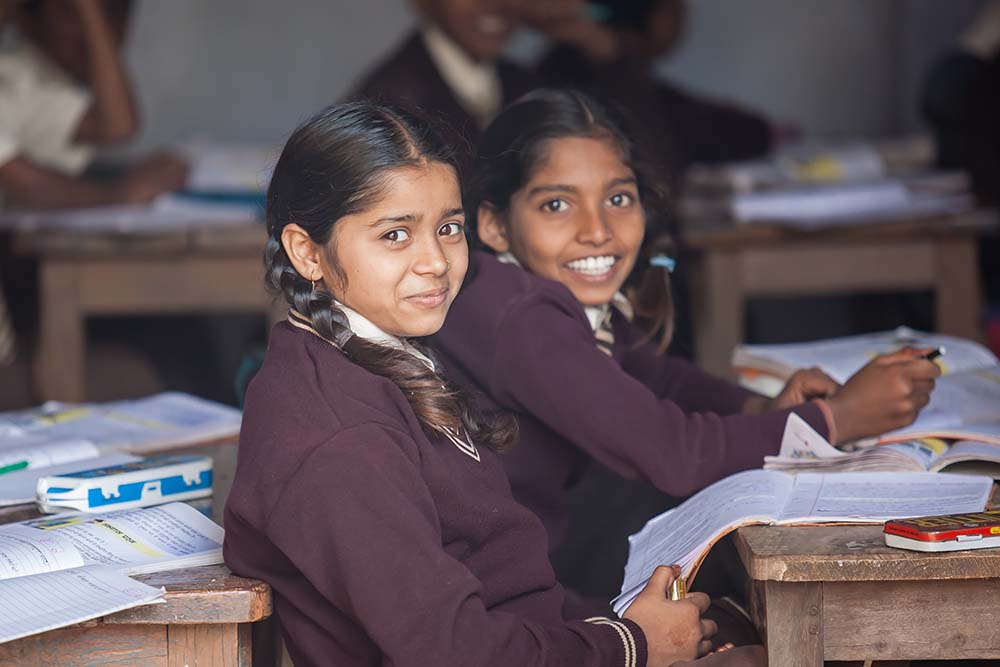“I love to see a young girl go out and grab the world by its lapels,” said Maya Angelou. Don’t we all! But often, grabbing the world requires that all-important component – education. According to the All-India Survey on Higher Education (AISHE) 2019-2020, the gross enrolment ratio of female students stands at 27.3 per cent. The study also observed that women in higher education opted for different courses from men. In arts, the share is at 52.9 per cent and in commerce it is at 48.8 per cent. However, for the higher-priced courses such as engineering and technology, this number drops drastically – it is just 29.2 per cent. How do we ensure that girls have a sufficient nest egg to pursue expensive courses in STEM and other fields of their choice? Start saving young!
Understanding the Sukanya Samiriddhi Yojana
Delhi-based Manoj Chahar, Founder & CEO of Moneyfrog.in, a wealth management platform says, “The Sukanya Samiridhhi Yojana is a tax-saving scheme initiated by the government, specifically towards the education and upliftment of the girl child. This was launched in 2015 as part of the ‘Beti Bachao’ and ‘Beti Padhao’ Initiative. Under this scheme, an account can be opened for a girl child aged 10 years or younger. The minimum investment is ₹250 and the maximum is ₹1,50,000, which is the upper ceiling of IT section 80C. The account can be opened with a Post Office or any participating banks - private or public.”
Chahar adds that the interest on the investment amount is added annually, and the final maturity proceed, is tax exempt. The maturity proceeds will go to the girl child after she reaches 21, or during the time of her marriage after she turns 18. If she wishes to pursue higher education, 50 per cent can go to her after the age of 18. “There are no downsides. This scheme is meant for lower- and middle-income earners. The idea is to push and motivate them to allocate funds for the girl child with tax benefits,” he explains.
“Each family can open up to two Sukanya Samriddhi Yojana accounts – only the biological parents or legal guardians can do this,” explains Kolkata-based chartered accountant Arpita Roy Krishnan. “If there are twins or triplets, then up to three accounts can be opened. States like Tamil Nadu, Andhra Pradesh, Karnataka, Uttar Pradesh and Maharashtra have seen the largest number of accounts since the inception of the scheme. It is great, since you reap the benefits of annual compounding. For instance, if you choose to deposit a sum of ₹100,000 per annum, for 15 years, the sum accrued at the end of 21 years would be a staggering ₹43,95,380.96. Even smaller amounts have the power to multiply into a tidy sum. Although one would need to consider inflation, given that higher education rates are increasing every year, the amount would still be enough to afford a good education. A girl can easily withdraw 50 per cent at age 18 for her undergraduate studies in a course of her choice, and the balance at 21 to pursue postgraduate studies. She can operate the account on her own once she becomes an adult legally.”

What else is out there?
There are various generic schemes that can also be considered towards saving for a daughter’s education, including Unit Linked Insurance Plan, Systematic Investment Plan, Fixed Deposits and Public Provident Fund. You can also consider a National Savings Certificate. This is a government-sponsored initiative, for a minor child, with a minimum investment amount of ₹1,000 and a lock-in period of five years.
Also, some states have launched their initiatives to get women to study further. Due to the growing numbers of female infanticide and discrimination against the girl child, the Haryana State Government has introduced the Ladli Yojana. Under this scheme, an amount of ₹5,000 per year is given to and invested on behalf of families with a minimum of two girl children. Each one’s share of the accumulated amount is allotted to each girl when she turns 18. Among the other documents to be submitted, include the girl’s class 10 and class 12 marksheets, as incentive to get the girls to finish schooling completely.
Chahar says, “There are many schemes or plans available, bundled as child plans or tax savings, offered by Insurance and Mutual Funds companies. You will need to consider saving for your daughter as part of financial planning, which means one has to start allocating funds from saving, towards many heads – including this. In the investment market, based on an individual’s age, risk and profile, various investment options are available. Behind the logic of investment is not marketing talk or tax saving, but financial planning and its allocation.”
In a nutshell, it is important that a daughter’s education shouldn’t be differentiated from other investments like a home, retirement, or even your son’s education. According to the AISHE survey, there are 1,043 universities, 42,343 colleges and 11,779 standalone institutes across India. This number is all set to grow by leaps and bounds, so it makes no sense for women to be denied the opportunity to college education simply because of the lack of funds. Conservative and regular investments, which bear fruit when a girl turns 18, are a solid way to circumvent this problem.
If you don’t believe in the impact of early investment towards a girl’s education, ask some of the world’s leading brands and corporate giants. Mark Parker, President and CEO of Nike, Inc said, “Every global company should invest in the girl effect. Economists have demonstrated that it is the best possible return on investment. With targeted investments linked to market demand, adolescent girls will reverse cycles of poverty with a huge impact on our global economy.”